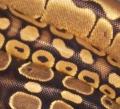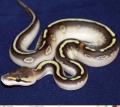» Site Navigation

1 members and 1,426 guests
Most users ever online was 47,180, 07-16-2025 at 05:30 PM.
» Today's Birthdays

» Stats

Members: 75,928
Threads: 249,128
Posts: 2,572,274
Top Poster: JLC (31,651)
|
-
Re: Please Check my HW
Hi,
I think I've worked out how to use tables (it took me long enough  ) on here - is this what you were trying to post? ) on here - is this what you were trying to post?
If I've messed it up during the learning curve let me know and I'll try and fix it.
And here is the code to do it to save anyone else having the same problems I did;
[TABLE] |[B]PS[/B] |[B]Ps[/B] |[B]pS [/B]|[B]ps[/B]
[B]PS[/B] |PPSS |PPSs |PpSS |PpSs
[B]Ps [/B]|PPSs |PPss |PpSs |Ppss
[B]pS[/B] |PpSS |PpSs |ppSS |ppSs
[B]ps[/B] |PpSs |Ppss |ppSs |ppss[/TABLE]
dr del
Last edited by dr del; 03-22-2009 at 04:26 PM.
Reason: tried to add a title and messed it up - more learning needed
Derek
7 adult Royals (2.5), 1.0 COS Pastel, 1.0 Enchi, 1.1 Lesser platty Royal python, 1.1 Black pastel Royal python, 0.1 Blue eyed leucistic ( Super lesser), 0.1 Piebald Royal python, 1.0 Sinaloan milk snake 1.0 crested gecko and 1 bad case of ETS. no wife, no surprise.
-
The Following User Says Thank You to dr del For This Useful Post:
-
BPnet Veteran


"I don't want to make money, I just want to be wonderful." ~Marilyn Monroe
-
-
Re: Please Check my HW
Thanks! I thought briefly about trying square brackets instead of <> and should have but I had no idea about the pipes. I'll change my Excel macro that generates the code and maybe experiment a bit more. It will be nice to be able to do squares on this forum.
-
The Following User Says Thank You to RandyRemington For This Useful Post:
-
BPnet Veteran


Re: Please Check my HW
 Originally Posted by RandyRemington

I'm with you on this. I think that realizing that pastels and spiders are hets makes it much easier to predict offspring from complex crosses.
Also, I'm not sure what the latest official notation is but I like the upper and lower case letters to show that there are two different "normal" genes involved in this cross; normal for pastel and normal for spider. I would write bumblebee X bumblebee as PpSs X PpSs with the P being the pastel mutant version and p the normal for pastel version and likewise S the spider mutant and s the normal for spider.
Yep, you are correct that a pastel (i.e.) is het for that mutation. It just becomes difficult when someone says "het for pastel" because that implies that two mutated alleles make a pastel. But, a pastel is a het (het for that chromatophore anomaly).
And, yes, in my career I've always done the cap/small letter (i.e., Pp) to indicate one mutated allele for (let's say) pastel and the other unmutated homologous allele (homologous roughly meaning paired or same location). So, for those who need an example, PpHh would be a pastel het for ghost (hypo), and PpHH would be a pastel ghost--you can make up your own letters. It could be helpful for some to insert "n" where there is a normal allele, but for me, it's just too busy. So Randy, Corvid, Dr. Del....good posts. I concur.
-
The Following User Says Thank You to GenePirate For This Useful Post:
-
Registered User

Re: Please Check my HW
 Originally Posted by GenePirate

Yep, you are correct that a pastel (i.e.) is het for that mutation. It just becomes difficult when someone says "het for pastel" because that implies that two mutated alleles make a pastel. But, a pastel is a het (het for that chromatophore anomaly).
And, yes, in my career I've always done the cap/small letter (i.e., Pp) to indicate one mutated allele for (let's say) pastel and the other unmutated homologous allele (homologous roughly meaning paired or same location). So, for those who need an example, PpHh would be a pastel het for ghost (hypo), and PpHH would be a pastel ghost--you can make up your own letters. It could be helpful for some to insert "n" where there is a normal allele, but for me, it's just too busy. So Randy, Corvid, Dr. Del....good posts. I concur.
The way I read things, when someone says "het for x" they are referring to x as a recessive trait i.e. not visibly discernable from normal.
"Het x" (without the for) to me represents a dom/codom trait that is not a homozygous animal, though both examples could be considered correct.
To muddy things further, if referring to a codominant trait, if you use the term "heterozygous" then you should name the super form to be technically correct.
I have no issue with "het" being used with a dom/codom trait, especially when working out squares. I just make sure to slow down and read very carefully.
Clarifying questions are never a bad thing.
Just my 2 cents.
-
-
BPnet Veteran


Re: Please Check my HW
All "heterozygous" means is that two different forms of an allele exist in the same location on two different homologous chromosomes. Heterozygous animals will phenotypically express whatever is encoded by the dominant allele. Obviously, if one of the alleles codes for a recessive trait, it will not be expressed in a heterozygous animal.
And before anyone else brings this up about the lettering...Technically the small letters are used to represent recessive traits, and the cap letters are used to represent dominant traits. But, if you're into Punnett squares, do whatever is comfy.
-
-
Re: Please Check my HW
Now that it looks like we have a completely dominant ball python mutation (pinstripe) perhaps our use of the word heterozygous will adjust a bit.
I think many snake keepers’ first exposure to "het" was with recessive mutations so they got to thinking that heterozygous meant "normal looking gene carrier". Some have since come around to the idea of a Pastel being a het so might be thinking heterozygous means "half way to some other morph" as in "Pastel is het for Super Pastel". But really heterozygous just means having an unmatched pair of genes at the locus you are talking about. Even without supers the Spiders and most all Pinstripes are still hets with one mutant gene paired with one normal gene. Perhaps we'll start seeing ads for heterozygous pinstripes (the ones sold so far) and both 100% and 33% possible homozygous pinstripes. Even though the het and homozygous pinstripe look the same understanding that a heterozygous pinstripe has one normal copy at the pinstripe locus helps you to see how it has a 50% chance of passing that normal version to an offspring while a homozygous pinstripe would always pass the pinstripe mutation.
-
-
Re: Please Check my HW
Wait,
Can you link me to the proven homozygous pinstripe story - I missed that entirely. 
dr del
Derek
7 adult Royals (2.5), 1.0 COS Pastel, 1.0 Enchi, 1.1 Lesser platty Royal python, 1.1 Black pastel Royal python, 0.1 Blue eyed leucistic ( Super lesser), 0.1 Piebald Royal python, 1.0 Sinaloan milk snake 1.0 crested gecko and 1 bad case of ETS. no wife, no surprise.
-
-
Re: Please Check my HW
I was going by a Reptile Radio interview with BHB. The archive link I found again now:
http://www.blogtalkradio.com/reptile...00bNERD-vs-BHB
I don’t see where I can tell how many minutes in it is but looks roughly 2/3 of the way through. I'm not aware of proof of a homozygous pinstripe being directly published on the web by anyone yet. But just going by that last August interview sounds like 22 for 22 pinstripes. He didn’t actually say that the females where not pinstripes but he does go on to say that he doesn’t see any obvious difference between that apparent homozygous pinstripe and a normal (i.e. heterozygous) pinstripe.
-
The Following User Says Thank You to RandyRemington For This Useful Post:
 Posting Permissions
Posting Permissions
- You may not post new threads
- You may not post replies
- You may not post attachments
- You may not edit your posts
-
Forum Rules
|
) on here - is this what you were trying to post?









 Reply With Quote
Reply With Quote